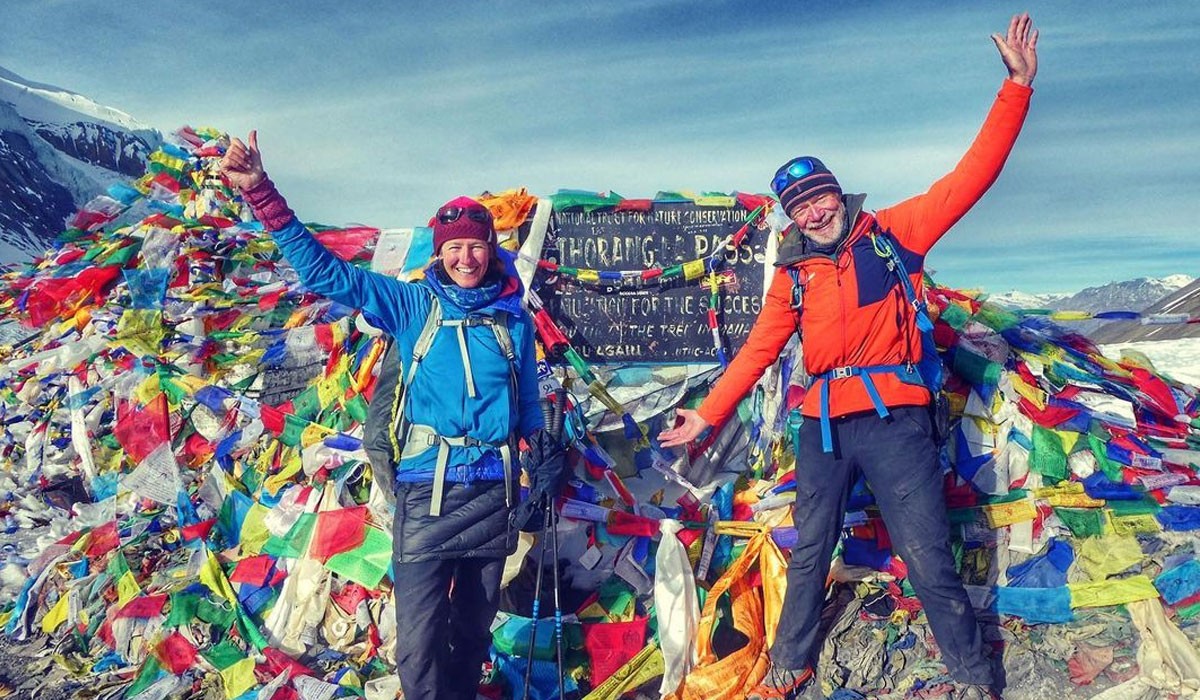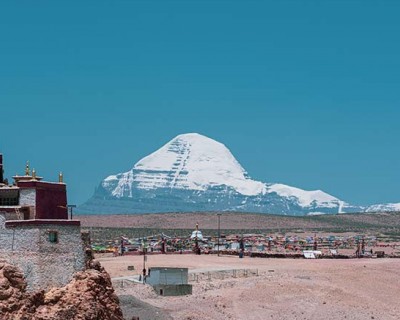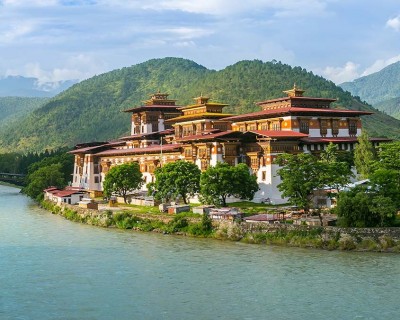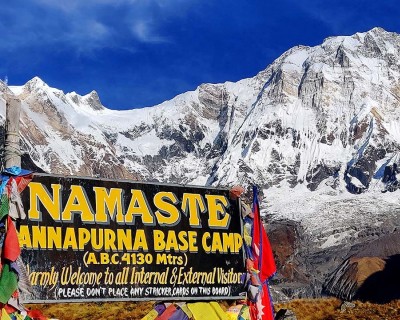General Trek Overview - Annapurna Circuit Trek in September
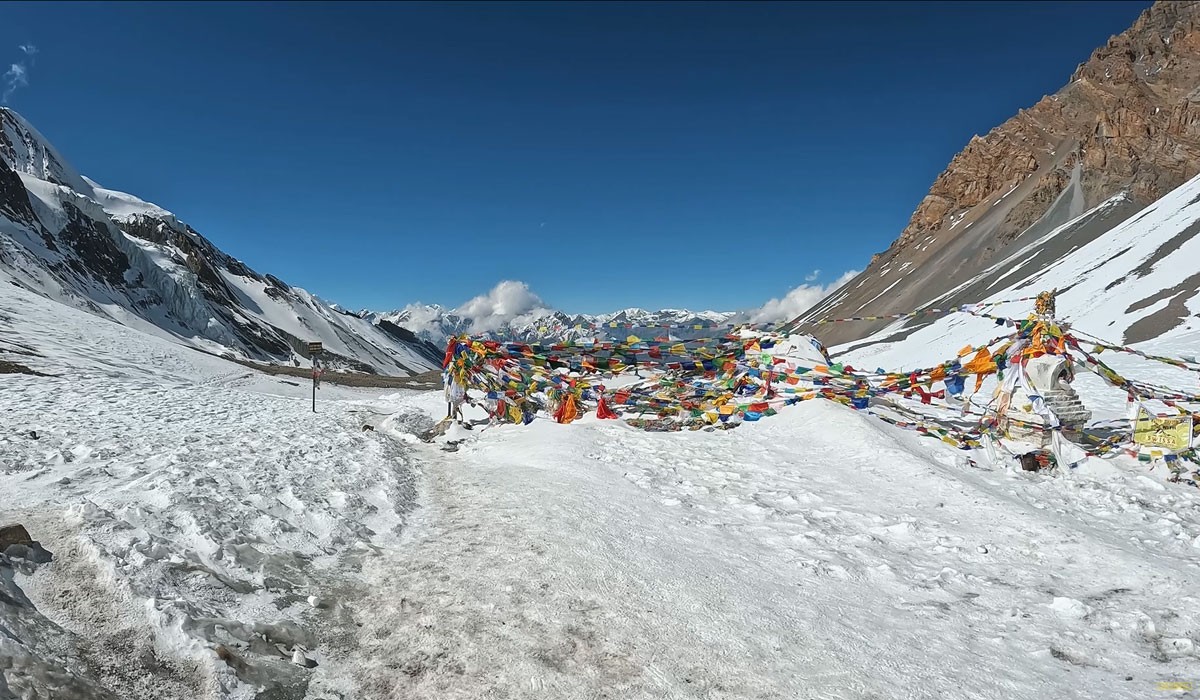
During your Annapurna Circuit Trek in September, you will kickstart your exciting exploration with an exhilarating drive to Ngadi (930 meters) from Kathmandu. The incredible natural scenery in this driving trail and driving alongside the Marsyangdi River and Trishuli River will be something that you will treasure for a lifetime.
Starting your trekking adventure from Ngadi, you will move along the inclining trails toward other popular highlights of the region with mild elevation points like Chamje (1,410 meters), Bagrchhap (2,160 meters), Chame (2,71 meters) and Lower Pisang (3,240 meters).
Moving further in your exploration, you will reach Manang (3,540 meters), and the further stop points in your trek are high elevation points of this adventure. So, you will get an acclimatization day at Manang before continuing further in your trekking route.
Then, you will move along the ascending route from Manang to Yak Kharka (4,120 meters), Thorung Phedi (4,560 meters), and overcome Thorung La Pass (5,416 meters), the highest altitude point in this trek.
After passing the Thorung La Pass, you will then move along with the lower elevation points in this circuit route. You will first head toward the significant religious landmark of the region, Muktinath (3,802 meters), and gradually descend to Tatopani (1,190 meters) in a comfortable jeep.
If your trekking package includes side exploration in the region, you will also explore the Ghorepani (2,750 meters) and ascend to the popular hill station in the lower Annapurna region, Poonhill (3,210 meters). Then, you will trek to Ulleri (2,050 meters), from where you will take a jeep ride down to Pokhara (820 meters).
After concluding your exciting trekking adventure in Pokhara, you will either drive back to Kathmandu in a comfortable tourist bus or via a short flight.
Why Should You Do Annapurna Circuit Trek in September?
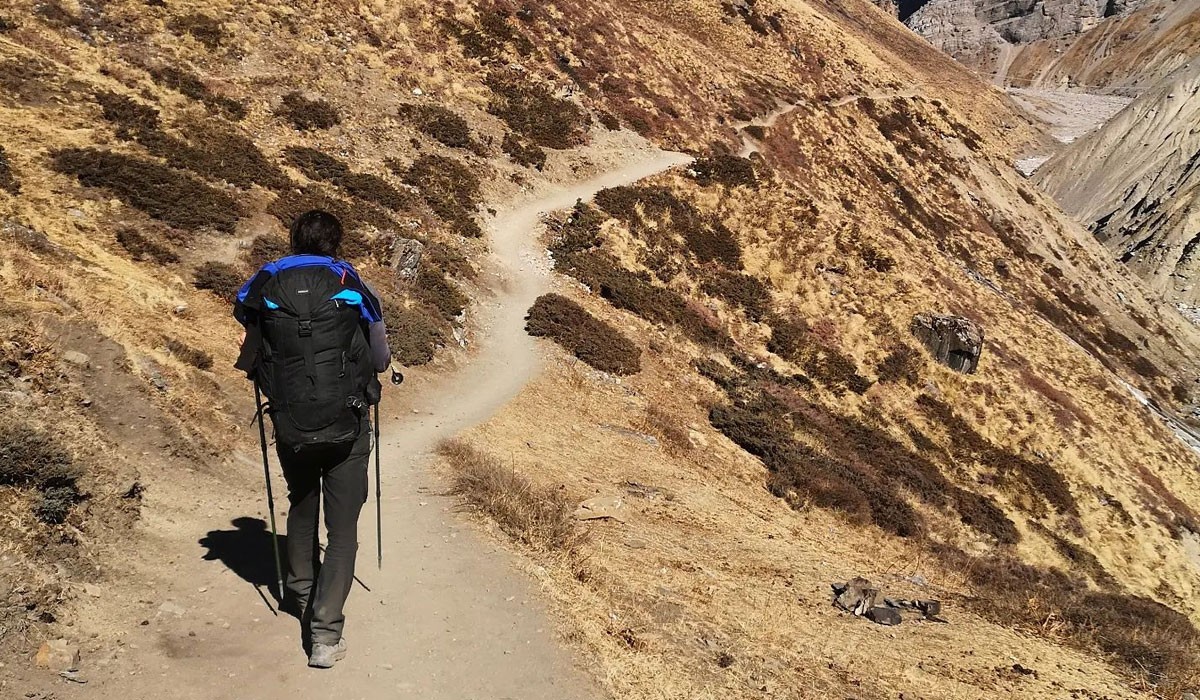
Pleasant Temperatures
The month of Septemeber marks the start of the autumn season, and the temperatures start getting comfortable. September also marks the end of the monsoon season in Nepal, which is from June to August.
So, the weather conditions in this season are just perfect and are on the warmer side compared to other months of autumn. The temperature of the Annapurna region hovers around 19°Cto 31°C in September. The lower trekking regions are generally warmer, and you will have a comfortable experience at alpine altitudes as well.
Less Crowded Trails
Although the month of September declares the cycle of the autumn season, the climatic conditions of the monsoon season are still lingering during the first part of the month. This means that you may have to occasionally deal with the light snowfall in the initial phase of the month.
Due to that, most of the trekkers wait for the peak point of the autumn season, i.e., October and the first half of November. So, during your Annapurna Circuit Trek in September, you will be able to enjoy a peaceful and comfortable trekking experience away from the mainstream crowd.
This not only offers you the opportunity to enjoy the true tranquility of the Himalayan region, but you will also have more chances for intimate encounters with the natives and their culture, traditions, and lifestyle.
Lush and Fresh Landscapes
The autumn season is generally known for its dry trekking trails; however, in this post-monsoon month, you will encounter lush and fresh landscapes during your exploration. The landscape of the region is lush and fresh thanks to the nourishment provided by the monsoon rain.
So, the peaceful and fresh vibrance will add excitement to your day-to-day trekking adventures. Furthermore, the rain also nourishes the streams, waterfalls, and rivers, which gives you the opportunity to witness their true magnificence during your trek.
Doing the Annapurna Circuit Trek in this month will offer you a unique opportunity to explore the fresh and lush landscapes of the region as well as the different shades of grey that are gradually taking over nature.
Core Among Festive Months
One of the major highlights of doing the Annapurna Circuit Trek in Nepal during the autumn season is the impeccable festive vibrance. However, the month of September is core even among the other festive months of the autumn season.
Nepal follows the lunar calendar system Bikram Sambat, and the festivals often move back and forth in the neighboring months. That’s why September has a great list of festive prospects that make cultural exploration in the country an enticing experience.
This month generally houses the unique and distinctive festivals in the country, like Gai Jatra (Cow Festival), Teej, Indra Jatra, Pachali Bhairab Jatra, and Dashain (the grandest festival in the country).
Crisp Mountain Views
The Annapurna Circuit Trek is generally known for the incredible views of the Himalayan ranges in the north-central part of the Himalayas. During this iconic exploration, you will be able to catch the breathtaking views of the Annapurna, Machapuchare, Dhaulagiri, Manaslu, Gangapurna, Tilicho, Chulu, Pisang, and other surrounding peaks.
You will be able to catch the best views of this incredible peak in the Himalayas during this month under the clear skies. Furthermore, the freshness and chilly climatic conditions of this month during morning and evening that blend well with crisp-stunning views of the mountain peaks sum up a perfect magical experience in the Himalayas.
Challenges and Difficulty Level of Annapurna Circuit Trek in September
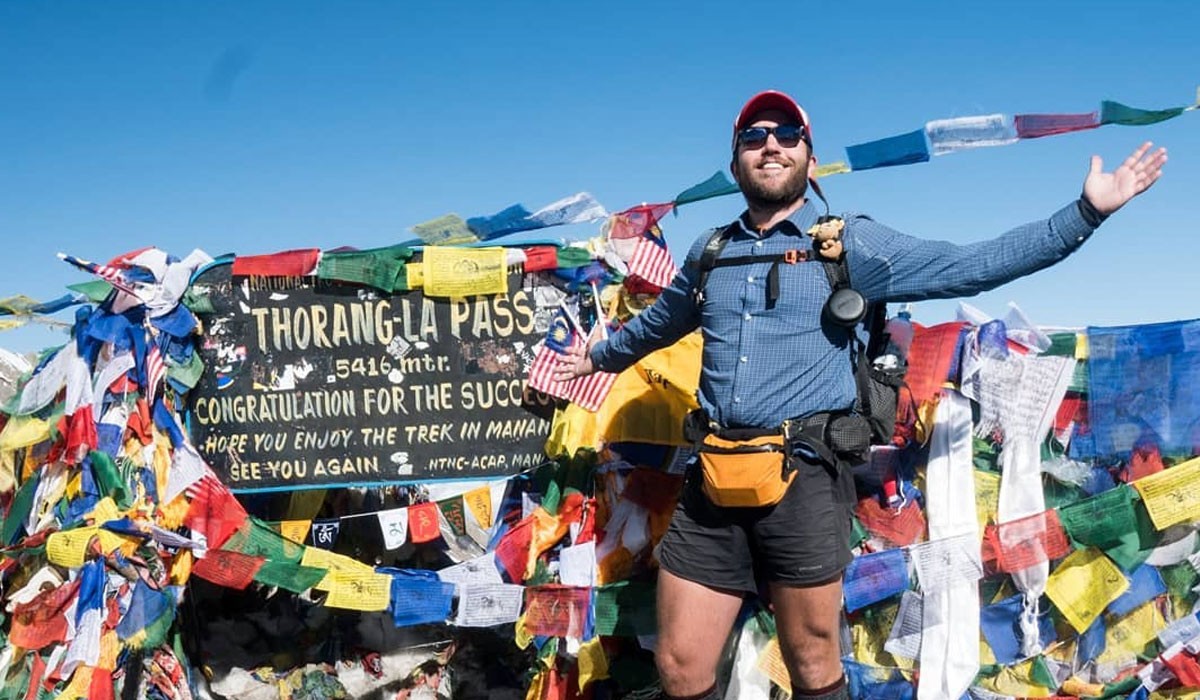
The Annapurna Circuit Trek is a moderate Himalayan trekking adventure that is ideal for anyone who is willing to participate in this iconic exploration. Although prior high-altitude trekking experience will be helpful to do this circuit trek, you don’t necessarily need any kind of experience.
There aren’t any technical sections along the route that you have to overcome; neither are the trails are strenuous and demanding as mountain expeditions. However, this is a Himalayan exploration that takes you to a significant altitude, so altitude sickness is one of the significant hurdles in this classical trekking expedition.
Generally, starting your trek from Ngadi (930 meters), you will ascend to the highest altitude of this trek at Thorung La Pass (5,416 meters). But, you will get enough period to acclimatize, so taking it slow will be sufficient to overcome this Himalayan pass.
On the other hand, the total trekking distance of this classical trek is around 160 km to 230 km (100 miles to 143 miles). The total trekking distance you cover in your trek will depend on the route of your package, itinerary plans, and extra exploration around the region. The standard duration of the trek is about 12 to 22 days, so the trekking hours come down to approximately 6 to 7 hours per day.
However, these are the challenges that you can easily overcome with enough preparation. So, during your Annapurna Circuit Trek in September, make sure you are prepared for the excursion, as your preparation is directly proportional to the comfort level of your experience.
Is Annapurna Circuit Trek in September Right for Me?
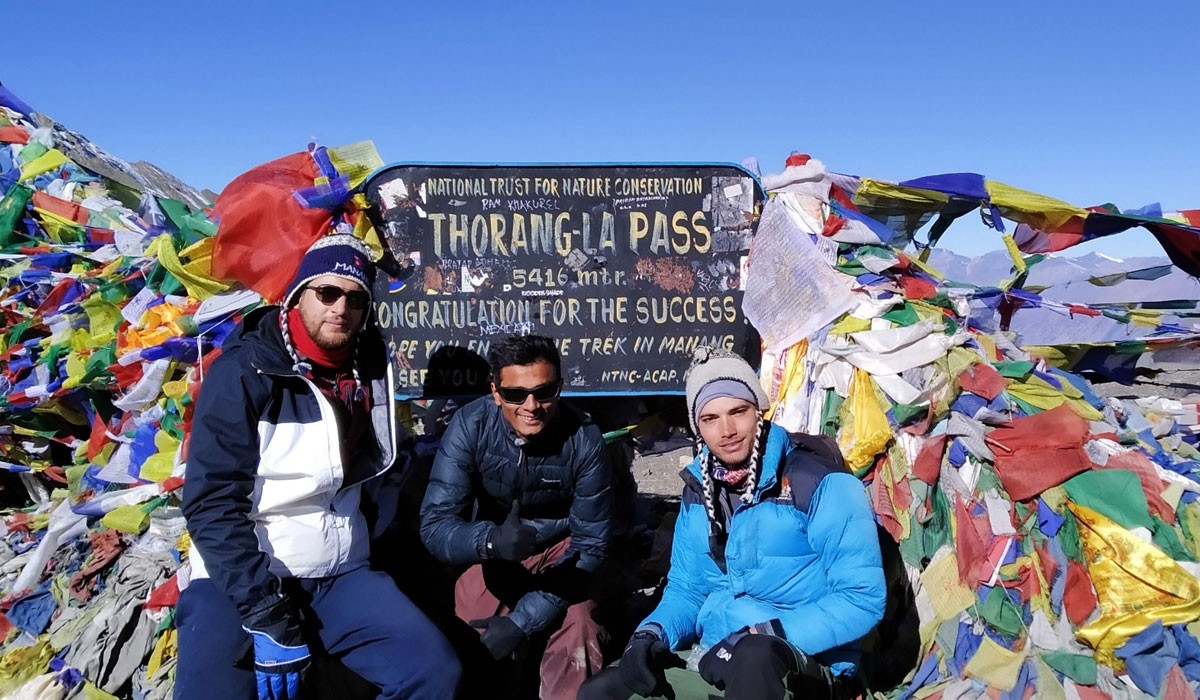
If you are wondering whether this classical trekking adventure in the Himalayas is the right package for you or not, let's start with the success rate of this exploration. The success rate of the Annapurna Circuit Trek hovers around 98% to 100%; the failure probability is significantly low in this exciting trekking package.
Although you need to put some effort into the preparation part, you will hardly fail to overcome the moderate trekking trails of this excursion. That’s why there is no age limit for this trek if you are confident about your physical aspects, you will be able to complete it without any hassle.
This exhilarating trekking route has been successfully completed by the trekking enthusiast in their 60s. However, due to high altitude conditions, you shouldn’t take young children with you on this trek. In overall, good health and basic fitness will be sufficient to take part in this iconic trekking adventure.
You may also like:
Training and Preparation for Trek

Normally, the recommended period for this Annapurna Circuit Trek in Nepal is around 3 to 6 weeks. Preparing for at least this designated length will let your body get accustomed to the physical activities.
You don’t have to a long period for your daily schedules for the preparation. Just 1 to 2 hours of light preparation will aid you in making the experience joyful and comfortable. If you are physically more active and work routinely, you can design the training program as per your needs.
For proper assessment of your physical capabilities, you can do some practice hikes on the steep section and see how well your body handles the physically demanding trails. During the actual trek, it all boils down to your strength and stamina level, so you have to emphasize these factors during preparation.
Strength Training Exercises: Squat, Weightlifting, Push Up, Bicep Curl, Deadlift, Glute Bridge, Plank, Calf Raise, Lunge, Pilates, Hollow Hold, Leg Raise, Overhead Press, etc
Stamina Training Exercises: Swimming, Jogging, Dancing, Lateral Jump, Sprint Training, Cardio, Jumping Rope, Rowing, Burpee, Jumping Jack, etc
Annapurna Circuit Trek Food and Accommodation
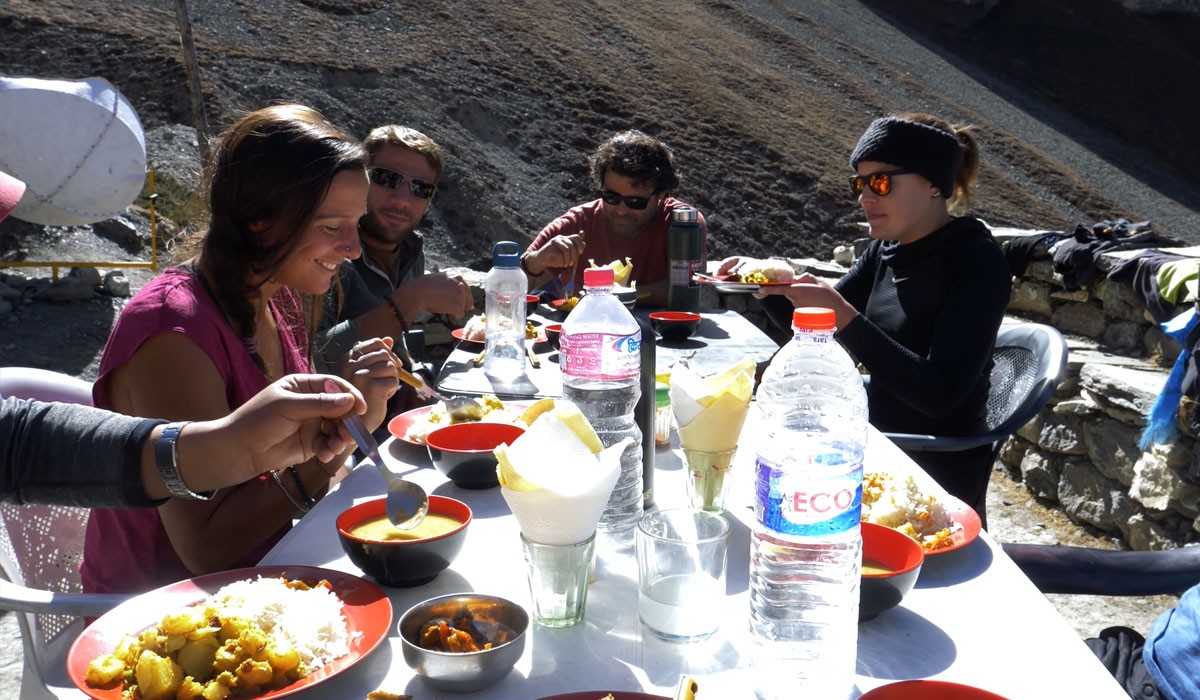
You are in for a delightful treat during your Annapurna Circuit Trek in September. This mainstream trekking region boasts a diverse range of delicacies and guarantees to make your trekking experience even more remarkable with a unique burst of flavors.
The teahouse trekking adventure of Nepal is world-renowned not just because of the alluring natural and cultural highlights of the region. But this kind of trekking experience also provides the opportunity to explore the cultural delights of the country.
During your Annapurna Circuit Trek, you can have a pick from a wide variation of the cultural dishes that represent different corners of this Himalayan nation. Other Asian countries’ national delights and Western cuisines with Nepali homely touches are some food line highlights of this trek.
Teahouse Breakfast Menu: Tibetan Bread, Toast, Jam, Butter, Honey, Muesli, Coffee, Tea, Milk, Butter Tea (Himalayan specialty), Eggs, Pancake, Oats, Pudding, etc
Teahouse Lunch and Dinner Menu: Dal Bhat, Dhindo Gundrukk, Thakali Set, Paratha, Chatamari (Nepali Pizza), Yak Steak, Samosa, Sel Roti, Choyela, Thukpa, Shyaphale, Rilduk, Pizza, Pasta, Momo, Chowmein, etc
Accommodation
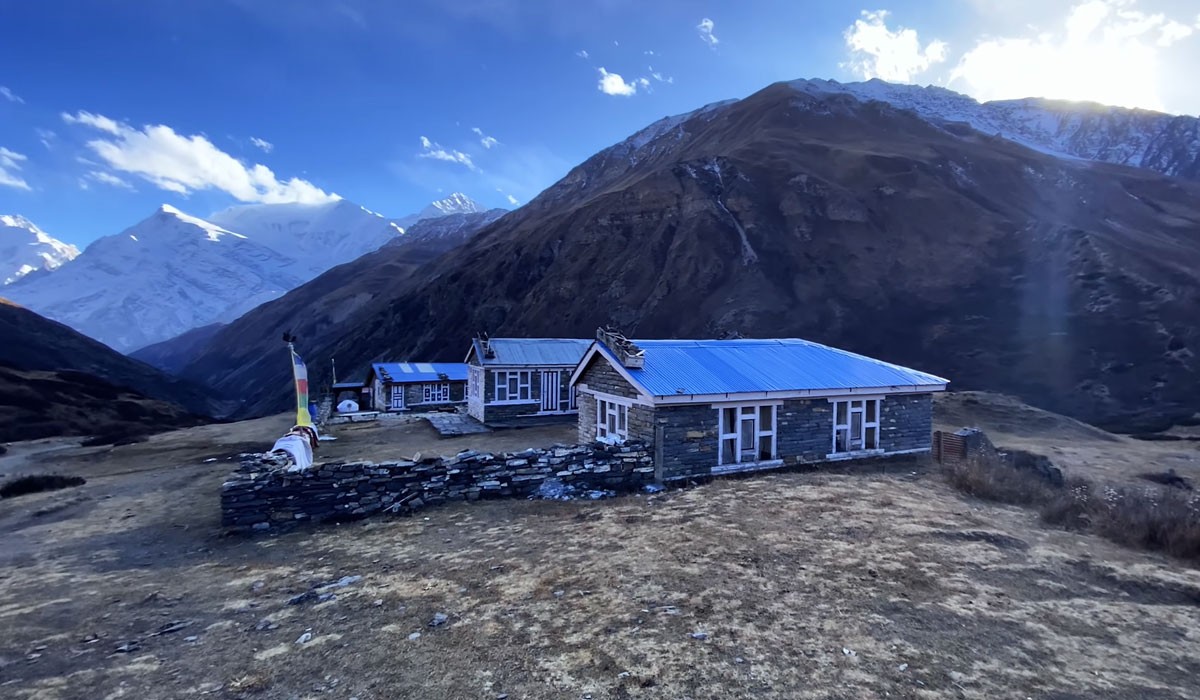
In a standard 14 Days Annapurna Circuit Trek package, you will spend the 13 nights of the package in teahouses or guesthouses/lodges. Some packages also include accommodation at the hotel in both Kathmandu and Pokhara city until departure, depending on the itinerary plans.
During your stay at the hotels in both of these major cities, you can enjoy luxurious accommodating facilities and all sorts of modern amenities. The lodging facilities, on the other hand, at the teahouses/ guesthouse are on a moderate scale.
You will be able to enjoy standard lodging facilities, but the extra amenities are limited depending on the nature of your package and altitudes. The teahouses/guesthouses in the lower region offer more in-house services and amenities, and the line-up of services starts thinning out as you trek to high-altitude points.
Permits and Documentation for Annapurna Circuit Trek in September
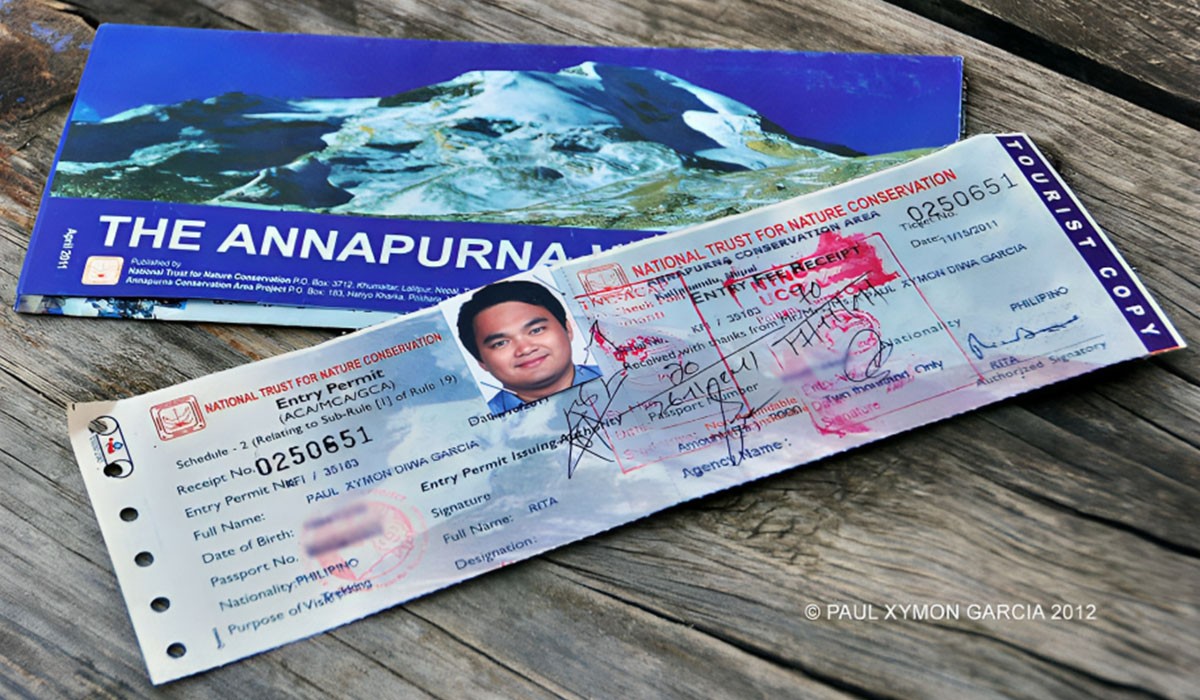
If you want to partake in this iconic exploration of the Himalayas during the starting month of the autumn season, you will require two permits. You will traverse across the restricted area in the region during your trek, so these permits are mandatory.
Permits Required For Annapurna Circuit Trek
- Annapurna Circuit Area Project (ACAP)
- Trekkers’ Information Management System (TIMS) Card
In your trekking trail, you will trek across the Annapurna Conservation Area, that was established in 1985. So, the ACAP Permit is an absolute necessity; this project focuses on the 7 units of the conservation areas like Jomsom, Manang, Bhujung, Lomanthang, Ghandruk, Lwang, and Sikles. You will have to approx. US$ 30 for the trek in September.
Similarly, another permit, the TIMS Card, has been made compulsory by the Nepal Government to enhance the safety and security features of the trekkers is also required to do this trek. TIMS Card costs approx. US$ 17 for your trekking adventure in September.
You will be able to get these permits from the Tourism Board offices in Kathmandu and Pokhara. The counter at Besisahar also provides the ACAP permit. However, in most general cases, your trekking agency will acquire all the necessary permits for your exploration.
Recommended Clothing and Gear for Trekking in September
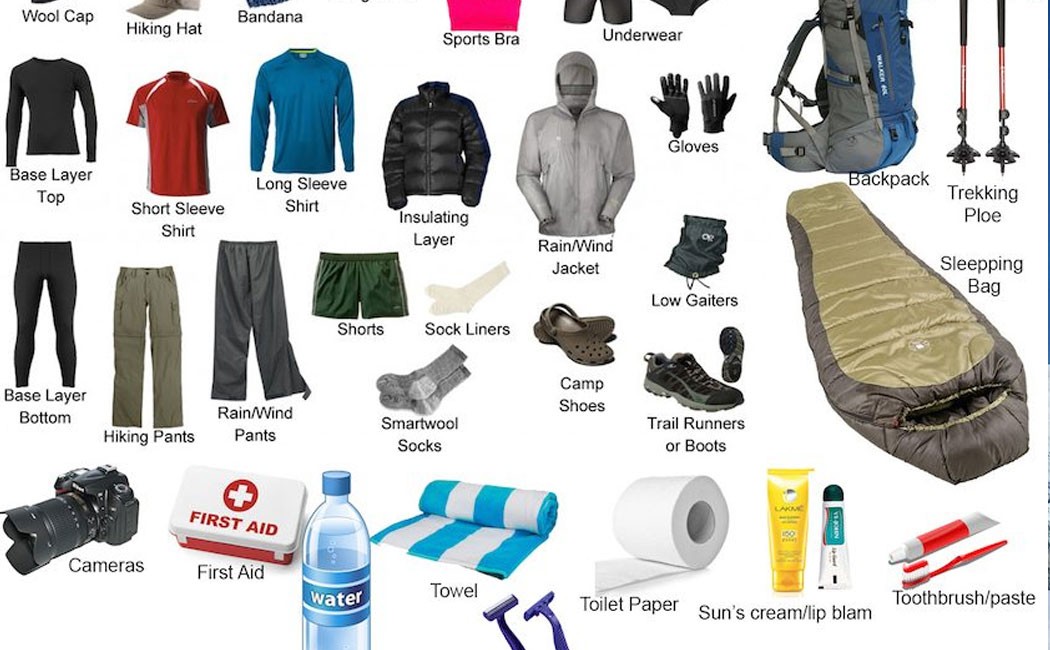
The bits of the monsoon season are still lingering during the initial phase of this month. That’s why if you are planning your exploration for this month, you should consider the weather factors for your packing.
You will trek through different climatic zones in this trek; the lower regions are relatively warmer, whereas the temperatures can drop to minus degrees at the higher altitudes. So, you should consider different layers of clothes that are suitable for different climates.
Also, the weight limit for luggage is about 15 kg per single trekker; this luggage will be carried by a porter. It means that the remaining luggage that exceeds the weight limit needs to be carried by you (trekker to porter ratio is 2:1).
General Recommendation for Packing
For Head and Body
- Cap or sun brim hat
- Knitted/woolen hat, beanie
- Winter neck scarf or neck cowl
- Cotton shirt, t-shirts (several layers)
- Thermal vest or insulated inner
- Woolen sweater
- Lightweight windproof/waterproof jacket
- Fleece jacket
- Down jacket
- Cotton pants and hiking shorts
- Comfortable trousers
- Windproof/waterproof trousers
- Insulated and woolen trousers
- Lightweight gloves, woolen-warm gloves
- Undergarments of different layers
Feet
- Comfortable trekking boot (break-n first)\
- Sports shoes for short hikes
- Waterproof gaiter
- Moisture wicking socks
- Several pairs of socks with different layers
- Toe warmers
- Slipper or crocks
Personal Hygiene
- Travel towel
- Toothbrush, toothpaste
- Biodegradable soap
- Shampoo, conditioner
- Tissue paper and toilet paper
- Wet wipes
- Sunscreen cream, body lotion
- Insect repellent
- Foot powder
- Sanitizer
- Lip care
- Small mirror and nail clipper
- Personal medications
- Feminine hygiene products
Gears and Accessories
- Trekking poles
- Sunglasses
- Sleeping bag
- Duffle bag
- Rain cover
- backpack/daypack
- Water bottle, thermos flask
- Headlamp
- Powerbank
- Camera, binoculars
- Map, compass, and GPS device
- Duct tape
- Small first aid kit
Some Helpful Tips for Annapurna Circuit Trek in September
- Enjoy a slow-paced adventure and acclimatize properly
- Eat a balanced diet and meet the hydration quota each day
- Always strictly stick to the instructions of guides and porters
- Maintain a proper communication chain with guides and porters
- Don’t smoke cigarettes and drink alcohol during the trek; they make acclimatizing difficult
- Respect local culture, customs, and traditions
- Monitor your health and pay attention to symptoms of altitude sickness
